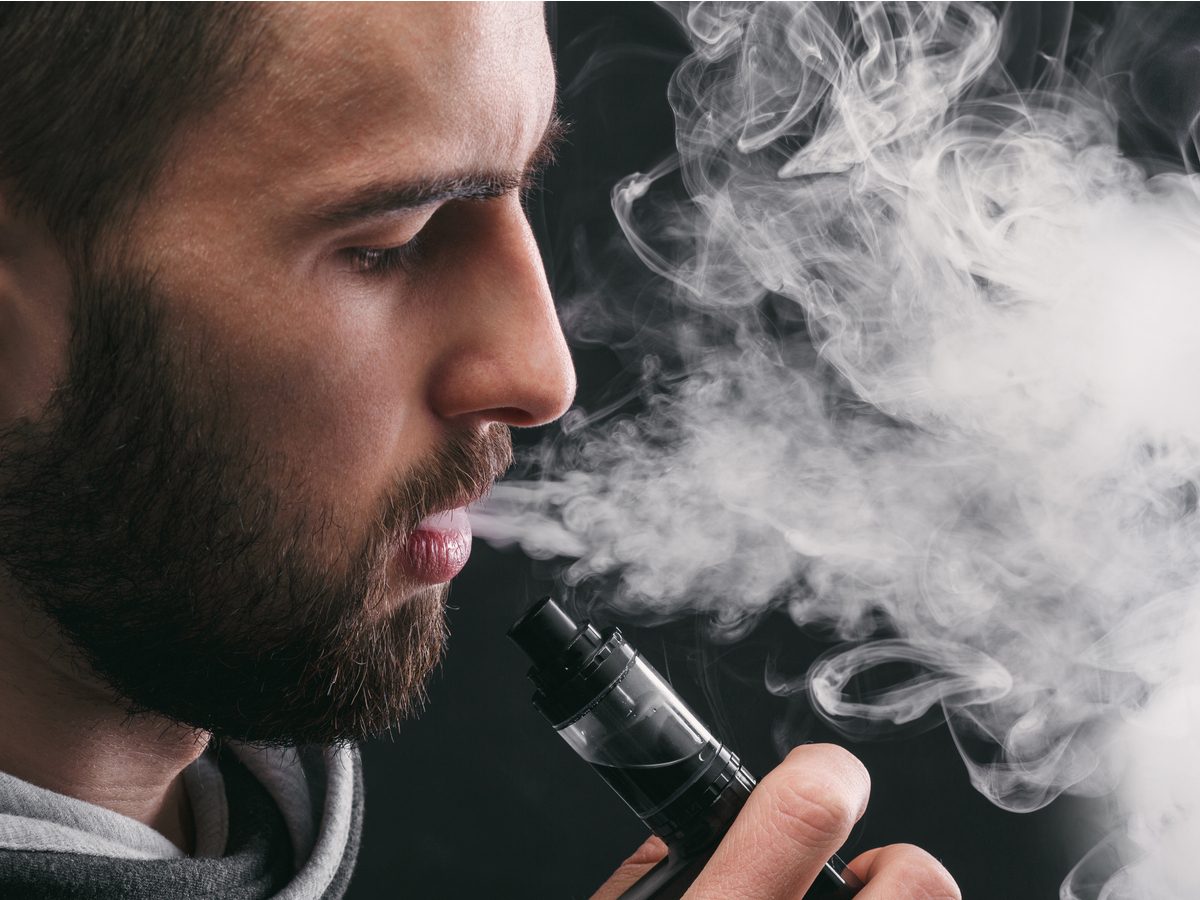
The Real Reason Christmas is on December 25
With holiday decorations popping up in stores before kids have finished their Halloween candy, it may be hard to imagine that Christmas wasn’t always celebrated on December 25. But it wasn’t until about three centuries after the birth of Jesus that Christians began commemorating it as a holiday on December 25th.
Why was that? First of all, the Bible doesn’t mention any specific date of birth for Jesus. Some biblical scholars note that passages mentioning sheep indicate Jesus may have been born in the spring, not in the winter, according to History.com. But the December 25th date could have come from Roman Catholic historian, Sextus Julius Africanus. In AD 221, he dated Jesus’s conception to March 25—nine months before December 25.
In addition, early Christian leaders considered the celebration of birthdays a pagan ritual. The Feast of the Epiphany, which commemorates the three Wise Men visiting Jesus and Easter, the day of Jesus’s resurrection, were considered more important religious holidays for early Christians.
But that doesn’t mean that early Christian leaders weren’t willing to take a page from the pagans. (Check out these holiday food traditions from around the world.)
“In the third century, the Roman Empire, which at the time had not adopted Christianity, celebrated the rebirth of the Unconquered Sun (Sol Invictus) on December 25th. This holiday not only marked the return of longer days after the winter solstice but also followed the popular Roman festival called the Saturnalia (during which people feasted and exchanged gifts). It was also the birthday of the Indo-European deity Mithra, a god of light and loyalty whose cult was at the time growing popular among Roman soldiers,” according to Britannica.com.
Early church leaders may have wanted to provide an alternative to the pagan celebrations. In AD 336, the church in Rome officially began celebrating the birth of Jesus on December 25. By that time, Emperor Constantine had made Christianity the official religion of the Roman empire.
The holiday wasn’t widely accepted by early Christians, however. It wasn’t until the ninth century that Christmas became a major holiday.
Next, discover the fascinating stories behind some of your favourite Christmas traditions.

How to quit vaping
The dangers of vaping are becoming more clear to medical experts and the general public. Inhaling the vapor from electronic cigarettes brings toxic chemicals into the lungs and has caused more than 2,000 cases of lung injuries (called “vape lung”) and 39 deaths in the United States alone. In September 2019, a London, Ont., teen was put on life support as a result of a suspected vaping-related illness—the first known case of its kind in Canada.
This is why the Centers for Disease Control and Prevention (CDC) is warning people not to use vaping products—especially those from black-market sources and those containing THC, the compound in cannabis that experts believe may play a role in the outbreak—while they’re investigating the cause of the illnesses and deaths.
But if you vape, how can you quit—especially given how addictive the inhaled substances are? We’ve pored over research and spoke to experts to pinpoint proven ways to stop.
Don’t return to cigarettes
Step one from the CDC is to avoid taking up cigarettes again (if a nicotine addiction was the reason you started vaping). “There are other delivery devices for nicotine that are very successful and have been used for many years,” says Robert Goldberg, MD, pulmonologist at Mission Community Hospital in Mission Viejo, California.
Explore nicotine replacement options
These include the patch, gum, lozenges, and nasal spray. “They’re available over the counter and regulated by the FDA,” Dr. Goldberg says. These can help you manage withdrawal symptoms while trying to quit e-cigarettes. A doctor can help you choose a method, decide how much to take at first, and how to cut back over time.
Talk to your doctor about medication
“Wellbutrin reduces the urge toward smoking and nicotine addiction,” says Dr. Goldberg. “It’s an antidepressant but has this secondary effect on the pathways in the brain.” Another drug, Chantix, can also be used for smoking cessation. “Use these only in conjunction with a physician,” Dr. Goldberg advises.
Announce you’re quitting
Once you’ve discussed nicotine replacement and medication with a physician, tell everyone you know that you’re quitting—especially your friends who vape, advises Tina Kaufman, PhD, assistant professor of medicine who supervises the cardiac rehab program at Oregon Health and Science University. “I tell patients not to hang around them while they’re trying to quit. It’s like asking an alcoholic to hang out in a bar while they’re trying to quit drinking.”
Set a quit date
Pick a date for quitting, Kaufman recommends. Then, the night before, clean out your home, purse, backpack, pockets, and car of vaping paraphernalia. Vape one last time and throw that device away too. Find out what can happen to your body when you stop vaping.
Sign up for text messages
A report in Nicotine and Tobacco Research found that a free quit-vaping program called This Is Quitting has helped thousands of teens and young adults reduce their e-cigarette use or stop altogether. After users enroll anonymously via text, the program encourages them to explore reasons for quitting and envision life after stopping e-cigarette use. It recommends specific, concrete actions and urges users to experiment with quitting strategies in small steps. About 170 new users enroll each day.
Distract yourself
Nicotine cravings will hit—so you want to be ready for them. “They last for about 10 minutes, so if you can distract your mind for that length of time you’ll get through it,” says Kaufman. Some quit-smoking apps offer games you can play that last that long. Taking a 10-minute walk can also work—and comes with another benefit: “The time between cravings lengthens and the strength of the craving decreases when you exercise,” Kaufman says.
Find other stress relievers
Many people vape because they’re stressed out. But that’s a short-term solution. Quitting vaping gives you an opportunity to develop other ways of coping. Experts at the Mayo Clinic, the American Institute of Stress, and elsewhere recommend exercising, deep breathing, meditating, journaling, or talking to a friend. You may also want to ask your doctor about acupuncture and hypnosis. Although they haven’t been studied on vaping, there is some evidence that they can help you quit cigarettes. Learn how to spot the silent signs of stress.
Talk to a counsellor
Considering quitting smoking? The Government of Canada offers a variety of free, personalized support from experts. Click on your province or territory and speak with trained specialists can provide counselling, help develop a quit smoking plan, answer questions and provide referrals to programs and services in your community.
Need more advice and inspiration? Check out more ways to quit smoking.

Why do we kiss under the mistletoe?
There are plenty of wonderful Christmas traditions that people enjoy following every year. One that tends to be more of a hit or miss, however, is hanging mistletoe. Some people just can’t find the plant in the store, or they’d rather spare others the embarrassment of forced kissing. Eating sugar cookies and drinking eggnog sounds more fun than smooching in front of your grandma.
Still, kissing underneath the mistletoe is a classic tradition. With or without the holiday context, it seems like an odd superstition to kiss someone under a plant. Although mistletoe closely ties with Christmas, it stems from both Norse mythology as well as Greek and Roman medicine. The Greeks used mistletoe to cure everything from cramps to spleen issues, while the Romans turned the plant into a balm for ulcers, according to History.com. Since this healing plant blossoms even in the cold winter, Celtic Druids thought it restored fertility, too. On the mythology side, legend says the gods used mistletoe to resurrect Odin’s son Baldur from the dead. And Baldur’s mother, the goddess of love, vowed to kiss whoever passed the plant, a symbol of love.
Ties with fertility and love stuck with the plant through the 18th century and were easily incorporated into Christmas celebrations. It reportedly started with lower-class servants in England before moving up to the middle classes, according to Today. Add that to your knowledge of fun holiday facts. Plus, some people think the sticky seeds that cling to the plant are symbolic of a kiss.
Versions of the tradition have changed throughout the years, too. One version says couples who kiss should also take a berry from the mistletoe with each kiss, and another says that refusing a kiss under the mistletoe is bad luck.
Check out these fascinating holiday food traditions from around the world.

“Elamin, isn’t it special?”
In 2000, when I was 12 years old, I left my home in Sudan for Canada. It was July and well over 20 C when I landed at Toronto’s Pearson Airport. To me, it was freezing cold.
I was mentally prepared for Canada to be chilly. I didn’t know that it would be so cold in July, and I most certainly did not know about a thing called wind chill. That the wind could affect the speed with which the human body loses heat was certainly not something they’d put in the immigration brochures for Canada. My father, who had already been in the country for four years, explained the concept of heating to me, and so, as we drove down the 401 to my new home, I asked if he could raise the temperature in the car.
Suffice to say, by the time winter rolled around, I was still learning. And all the lessons I’d been taking in were leading up to a big moment.
That moment came in the middle of eighth-grade English, sitting in Mrs. O’s class, while she read us Lord of the Flies. While I was trying to make out what Jack or Ralph were up to in the story, I heard my classmates’ excited sounds and I looked outside. And there it was: first snow.
After the mild chatter went through the classroom, Mrs. O sought to bring the class’s attention back to the matter at hand: those British boys and their inner beasts. But not me. I was transfixed, staring out the window as light flurries fell from the sky and gently melted on the schoolyard. It was something I’d seen a million times in movies and on TV, and I’d never quite believed it was real. But there it was: in the clouds, ice crystals really could stick together, really could form snowflakes and those snowflakes really could—did—fall from the sky. It looked surreal and dreamlike. I was overwhelmed.
Mrs. O realized that this was the first time I’d ever seen snow. In an act of profound generosity I will never forget, she put the book down and, beaming, said, “It’s Elamin’s first snowfall. Elamin, isn’t it special?”
My classmates, who knew I was a recent arrival, studied my face, trying to take in the event through the eyes of someone who had never seen it before. Most of them had a dozen winters under their belt. I was catching up.
The teacher invited me to the window so that I could have a closer look. Another kid, Mike, came too, and said, “Look, this is really exciting. But it’s nothing compared to what’s coming.” The warning sounded dejected—I could hear the resignation in his voice.
Just then, Mrs. O decided to let us go outside for recess a few minutes early, maybe because she lost her place in the book, but more likely for my benefit, so I could study the falling snow a little longer.
Mike was right—I had no idea what was coming. But in that moment, winter was magic.
Learn the story behind one family’s funny Christmas stocking tradition.

My first Toronto winter
I moved to Toronto from Colombia to be with my partner in 2015. I love my husband, but winter and I have a far more adversarial relationship. Basically, the season torments me.
My first year here, I developed a serious case of the winter blues. There was a time when I didn’t leave the house for 10 days straight. I’d stick a pinkie finger out the door and be like, Nope! Too cold! But I’d also see all these other people just walking around like it was nothing. I made it my mission to survive the season.
First, I tried to join my partner for an after-work stroll. It was minus-35 C, so I got bundled up in more layers than I’d ever worn. I was determined. Ready. I barely made it to the top of the street before I had to give up and duck into a restaurant. I was so dizzy and short of breath that one of the staff members came over and asked me if I was okay.
My next bright idea was to turn on my oven for extra heat. That worked for a while—but eventually I used it so much that it broke. I tried diligently taking vitamin D (not as transformative as I’d hoped), staring at a lamp that simulated the sunrise (useless) and taking time to appreciate the beauty of winter scenery (best done from indoors, in my opinion). I’m still not on great terms with the season, but I haven’t given up. This year I plan to try ice skating and winter cottaging. Eventually, we’ll work things out.
Don’t miss this heartwarming story of one family’s first Prince Edward Island winter.

My first Prince Edward Island winter
My family—me, my wife and our four young children—fled Syria and came to Canada as refugees in December 2017. In Syria, I’d worked as a chef and a fitness trainer. My physical strength couldn’t save me from what I encountered when I arrived in Charlottetown, P.E.I.: I was scared of how cold it was! Going outside felt like a feat each time I did it. But I knew I had to get acclimated, so I went for walks.
We took our kids for strolls in the park, and along the Charlottetown harbour. I loved to watch the ice flow by on the water—a sight you never see in the Middle East. Walking also let me experience the stillness and quiet that descends after a snowfall. That was a new type of peacefulness and calm that I came to appreciate.
Making friends took some time. I never got into winter sports, but I did join an indoor soccer club with a friend, where I made new connections. I’m no longer scared of winter—the season offered my family a peaceful welcome at a time we needed it.
Check out this funny story about one Canadian’s first Toronto winter.
Lung cancer is one of the leading causes of cancer death in Canada. And although smoking is an obvious culprit, up to 20 per cent of people with lung cancer have never touched a cigarette, according to Brian Mitzman, MD, a thoracic surgeon at NYU Winthrop Hospital and Assistant Professor at NYU Langone Health. (Here are the signs of lung cancer you might be ignoring.) People who already avoid smoking and still have a high risk of developing lung cancer may want to stop and shop in the dairy section. According to a new study, there’s a link between high yogurt and fibre intake and a reduced risk of lung cancer.
What the study says
Researchers published a report in JAMA Oncology based on an analysis of ten studies from the United States, Europe, and Asia involving a total of about 1.4 million people. They examined 18,822 cases of lung cancer and adjusted for lung cancer risk factors, like smoking. This study is an “observational trial,” in which researchers look back to see if there’s an association between a disease and other factors after the fact, Dr. Mitzman explains. “The results of observational trials are not as accurate as randomized or blinded studies, but can still give us important information,” he says.
With that in mind, the study suggests that eating yogurt and fibre links to a reduction in lung cancer risk. They found that men who ate about three ounces of yogurt a day, and women who ate four, had a 19 per cent lower risk of lung cancer. Those who ate the most fibre were also 17 per cent less likely to develop cancer, too. Interestingly, the research shows even eating small amounts of either tie back to a decreased risk, according to Dr. Mitzman. Still, the results of this study show that eating the most fibre and yogurt would lower your chances by 33 per cent to 33.5 people in 100,000, or a risk of 0.03 per cent, according to Dr. Mitzman. “Overall, it’s not a huge change,” Dr. Mitzman says. But even a small change might be reason enough to add yogurt to your shopping cart.
What does previous research show
There isn’t a lot of research on yogurt and fibre, in terms of lung cancer. “There have been numerous other observational studies showing a potential association with fibre and improved lung function, and in some cases, decreased lung cancer,” Dr. Mitzman says. “Unfortunately, there is limited evidence to show a direct link between the two.” Plus, there are even fewer studies on yogurt and lung cancer, and no studies evaluating the combination of yogurt with fibre, he says. So although the JAMA report is encouraging, it’s not definitive. There is a lot of interest in studying the gut biome, and how it might affect other parts of the body, such as the lungs, so more research is likely to come.
How important is it to eat yogurt every day?
It’s certainly possible that eating more yogurt and fibre could have many different health benefits, according to Kevin Sullivan, MD, an attending physician at the Northwell Health Cancer Institute. Yogurt is rich in calcium, B vitamins, vitamin D, and many other nutrients. Keep in mind, however, that the highest risk of developing lung cancer lies with those who are current smokers or who have a significant smoking history, Dr. Sullivan says. “If you smoke, the single best thing you can do to improve your health is to quit—not consume more fibre or yogurt while continuing to smoke,” Dr. Sullivan says. (Check out some of the best ways to stop smoking.) Adding yogurt to your diet is a bonus, but it should not be your first line of defence. Researchers have a long way to go. In the meantime, “Go buy a tub of yogurt and eat some more veggies with dinner,” Dr. Mitzman says, “It definitely can’t hurt.”
Another bonus? Yogurt is one of the healthiest high-fat foods you should be eating.

What is the tread test?
You can help prevent tire-related accidents, in your own car and your teenager’s vehicle too, by doing a one-second test on the tires. The coin tread test will quickly show you how good—or poor—the tread on your tires is, and help you know if it’s time to head to the mechanic.
How often should you do the tread test?
It is recommended that you check the tread on your tires monthly. Thankfully, because the coin tread test is self-administered, takes but a moment, and doesn’t cost anything, there is no excuse for ever driving with unsafe tires again.
Let Queen Elizabeth’s head be your guide
With just a nickel between your thumb and pointer finger, angle Queen Elizabeth upside down, facing down toward the ground. Proceed to stick the nickel into various places in the tread across all your tires. If you can see the top of the Queen’s crown, it’s time to get a brand-new set of tires.
Here are the myths you need to stop believing about your car.

Wintertime Riches
I grew up in a little community in northern Manitoba next to Kississing Lake. My family is Métis and Ojibway, and I was the youngest of eight children. I’m 85 now, and back in those years when I was growing up, we were not practicing many of our traditional ceremonies. My mother even thought that it would be safer for me not to learn our language, because there was bullying in school if you were Métis or First Nations.
We would celebrate winter just by being together as a family and telling stories. One of the stories was about how wolves teach us that it takes a village to raise a child. In a wolf pack, when the babies are born to the female, they are not cared for just by the mother and father. The whole pack is charged with looking after those children, so when the parents go to get food, it’s not just for their own babies. They share their food with all.
Our community had immigrants from Poland, Ukraine and China. We had First Nations people who left the reserves, and then the Métis people. There were maybe 35 homes, none of them with running water or electricity. We never locked our doors. My mother believed if somebody was coming to visit and we weren’t home, they were welcome to come into the house and have a cup of tea. And all the children played together in the wintertime. One of our friends had a horse and a long sleigh, which was used to bring wood to the homes. We’d pile onto it—a whole group of kids all bundled up—and go for long rides through the woods where the men were cutting down trees for firewood.
Before winter arrived, we used to try to imagine how the ice on the lake was going to form that year. If the water was wavy when it was trying to freeze, it would be all lumpy and bumpy; if we had calm days, it was smooth as can be. We would hope it wouldn’t snow for a while, and when we thought the ice was thick enough, we’d build a big bonfire and skate around it.
We did learn the ways of Christmas, but we weren’t familiar with gift buying. The only gifts would come when we’d hang up a stocking—a tradition we picked up from the Christians who came—and were thrilled to find some Christmas candy in it, as well as some mandarin oranges.
Until I went to my first movie in the mining town 10 kilometres away, and saw women wearing beautiful dresses and living in big castles, I never thought that I was poor—or knew we were labelled as living in poverty. I had everything I needed: a comfortable home, wonderful food and I was dressed nice and warm. We had all the outdoors to play in, and we created our own games in the snow.
Read on to find out how a night of carolling brought a small town together.